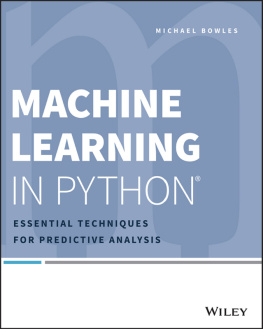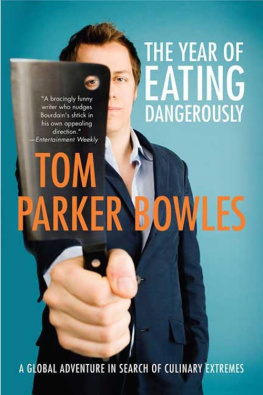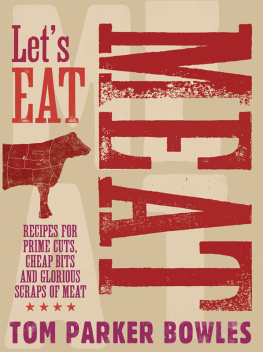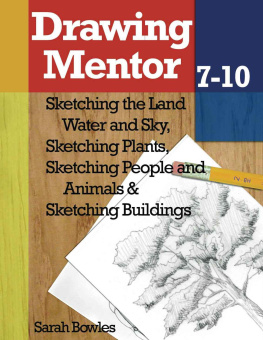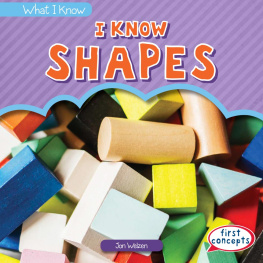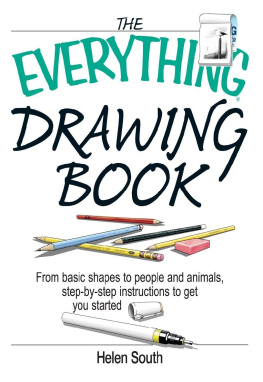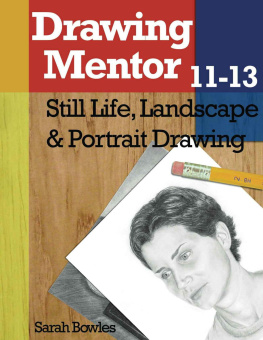Bowles - Drawing Mentor 1-3: Drawing Materials, Lines and Shapes, Perspective and 3D Shapes
Here you can read online Bowles - Drawing Mentor 1-3: Drawing Materials, Lines and Shapes, Perspective and 3D Shapes full text of the book (entire story) in english for free. Download pdf and epub, get meaning, cover and reviews about this ebook. year: 2013, genre: Children. Description of the work, (preface) as well as reviews are available. Best literature library LitArk.com created for fans of good reading and offers a wide selection of genres:
Romance novel
Science fiction
Adventure
Detective
Science
History
Home and family
Prose
Art
Politics
Computer
Non-fiction
Religion
Business
Children
Humor
Choose a favorite category and find really read worthwhile books. Enjoy immersion in the world of imagination, feel the emotions of the characters or learn something new for yourself, make an fascinating discovery.
Drawing Mentor 1-3: Drawing Materials, Lines and Shapes, Perspective and 3D Shapes: summary, description and annotation
We offer to read an annotation, description, summary or preface (depends on what the author of the book "Drawing Mentor 1-3: Drawing Materials, Lines and Shapes, Perspective and 3D Shapes" wrote himself). If you haven't found the necessary information about the book — write in the comments, we will try to find it.
Drawing Mentor 1-3: Drawing Materials, Lines and Shapes, Perspective and 3D Shapes — read online for free the complete book (whole text) full work
Below is the text of the book, divided by pages. System saving the place of the last page read, allows you to conveniently read the book "Drawing Mentor 1-3: Drawing Materials, Lines and Shapes, Perspective and 3D Shapes" online for free, without having to search again every time where you left off. Put a bookmark, and you can go to the page where you finished reading at any time.
Font size:
Interval:
Bookmark:
Drawing Mentor
Volume 1
DrawingMaterials
Volume 2
Linesand Shapes
Volume 3
Perspectiveand 3-D Shapes
And
ABrief History of the Pencil and the People Who Shaped it
BySarah Bowles
Copyright 2012 Sarah Bowles
All rights reserved. No part of this book, text,photographs or illustrations may be reproduced or transmitted in any form or byany means by print, photoprint, microfilm, microfiche, photocopier, internet orin any way known or as yet unknown, without written permission.
Preface
TheDrawing Mentor series of books is intended to help beginning tointermediate drawers learn and improve their drawing skills. Each book iswritten as a stand-alone lesson which can be used on its own, this gives thereader the ability to pick and choose the lessons and skills they would like tolearn to the exclusion of all else.
Theearlier lessons in the series are very foundational, designed to improve thereaders technical ability and understanding before going on to later lessonswhich are more project-based and written assuming technical skills have alreadybeen developed. If youre an absolute beginner its recommended that youproceed from Volume 1 as that will ensure your understanding of how to use thetechniques employed in later lessons as occasionally these lessons will referto principles and skills taught in previous volumes.
Thisbook includes Volumes 1, 2 and 3 which are beginning and intermediate lessonswhich teach the most basic drawing fundamentals from the ground up. If yourenew to drawing or want to improve your basic skills this is the book for you. Volume 1 is an introduction to basic drawing materials and explains some of thepros and cons of each. Volume 2 covers lines and shapes and how to apply themto create very basic drawings. Volume 3 is an in-depth lesson coveringperspective, tone shading and highlights to create objects that look threedimensional. Each concept is explained thoroughly and examples given,opportunities to practice are also included to help you master the skill taughtin each section. These lessons should be completed before moving on to themore advanced lessons in later volumes.
Theintent of the Drawing Mentor series is to periodically add new lessonsover time to help you continue to improve your skills. If there is aparticular skill or lesson you would like covered please feel free to send anemail to . Your feedback suggestions and reviews are very much appreciated and will be usedto help create lessons that will benefit you the most.
Thanksfor choosing Drawing Mentor. Heres to your success.
Sincerely,
SarahBowles
Helpsupport someone in need.
10%of all profits are donated to organizations giving humanitarian assistance.
Contents:
Materials
There area only two things you need in order to draw; somethingto draw with, and something to draw on. Sounds pretty simple when its putthat way but there are thousands of different combinations of pencils and paper. Each combination produces a different look. Some combinations will workbetter than others to give you the result you want. What you decide to draw,and your location, can be big factors in determining the materials you use.
All the examples and practice exercises in this series oflessons were done using a No. 2 pencil and regular white 8 X 11 paper. Theseitems are relatively inexpensive and most people already have them. Itsdefinitely good to experiment with different materials, it will help you learnfaster, youre more than welcome to use whatever you want for each practice exercise,but if a No. 2 pencil and plain white paper is all you have that will be good enoughto follow any of the examples in these books.
This lesson gives a quick overview of some of the mostcommon materials used in drawing, highlighting their strengths and weaknesses.
There are also many items which arent necessary for drawingbut can be useful to have. This lesson will also discuss some of the extra itemsyou may want to eventually get if you dont already have them.
There are many types of pencils; big, small, rectangular,round, mechanical, wood, plastic, the list could go on. Only the most commondrawing pencils are discussed below.
Hard pencils, the H stands for hard. 1H is two gradesharder than a No. 2, or HB pencil, 9H is the hardest. Remember, the higher thenumber the harder the pencil (The pencil one grade harder than No. 2 is the Fpencil, F stands for fine point).
Pros:
Keeps a point or an edge for a long time without needing to re-sharpen
Draws clean lines that dont smudge easily
Good for quick sketches in sketchbooks and drawing fine details
Cons:
Writing core can damage the paper surface
Difficult to make dark lines and shadows
Difficult to fully develop a drawing

Figure 1-1. Common H pencils
Soft pencils, the B stands for blackness. 1B is one gradesofter than the No. 2, or HB pencil. 9B is the softest; the higher the numberthe softer the pencil. 7B 9B do not come in the same form as a regularpencil. Because theyre so soft, they usually come as a very thick graphitecore without a wood casing.
Pros:
Versatile, can develop light lines and shades as well as darklines and shades
Can make a fully developed drawing with a single pencil
Good for exploring dark shades and sketches with a lot ofcontrast
Cons:
Lead is soft and smudges easily
May have to sharpen often
Creating light lines can be challenging

Figure 1-2. Common B pencils
The No. 2 or HB pencil is right in the middle of the B to Hhardness range. The reason so many of these pencils are made is because theyrevery versatile.
Pros:
Great overall pencil
Holds an edge or point well
Can make dark lines and shades as well as light lines andshades
Minimal smudging
Cheap and easy to get
Great beginner pencil
Cons:
If its the only pencil you use youll never learn about othertypes of pencils

Figure 1-3. No. 2 or HB Pencil
An alternative scale of hardness is the number scale whichranges from 1 4 with one of the pencils being a 2 1/2. As a general rule thenumber 1 is equivalent to a 1B and number 4 is equivalent to 2H however somemanufacturers pencils correspond differently. Its not as common to see thenumber system in the artists world.
Another thing to understand is that even though companiesmay use the same number system, their pencils arent necessarily the same; a 3Bpencil from one company may be as soft as a 5B pencil from another company. Its a good idea to get a set of pencils from the same company so you can beconsistent.
Theres probably even more kinds of paper than there arepencils; it comes in all shapes, sizes, colors and textures. You dont have tolimit yourself to just normal white paper, sometimes using a colored paper ortextured paper will help you get the look or feeling you want. Only a fewtypes of paper are listed below simply to illustrate the range of differences.
Font size:
Interval:
Bookmark:
Similar books «Drawing Mentor 1-3: Drawing Materials, Lines and Shapes, Perspective and 3D Shapes»
Look at similar books to Drawing Mentor 1-3: Drawing Materials, Lines and Shapes, Perspective and 3D Shapes. We have selected literature similar in name and meaning in the hope of providing readers with more options to find new, interesting, not yet read works.
Discussion, reviews of the book Drawing Mentor 1-3: Drawing Materials, Lines and Shapes, Perspective and 3D Shapes and just readers' own opinions. Leave your comments, write what you think about the work, its meaning or the main characters. Specify what exactly you liked and what you didn't like, and why you think so.


